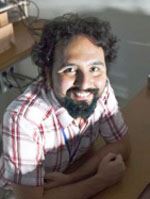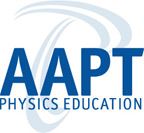- Home
- What We Do
- Laboratory Immersions
- Immersions 2020
- Imm2020PPPL_Electrical_Breakdown
Plasma Physics - Electrical Breakdown and Paschen's Law
Princeton Plasma Physics Lab, June 25–27, 2020
(One set-up available)
Plasmas are the most common form of matter in the visible universe but remain one of the least studied topics in the undergraduate physics curriculum. While a fascinating multivariable system on its own, the study of plasmas also has connections to a significant number of topics in an undergraduate physics curriculum, from classical mechanics to atomic physics. In this Immersion, participants will first build a DC glow discharge, a simple plasma source that is understandable to undergraduate students yet flexible enough to be used in a variety of experiments (see our article in the Sept. 2013 edition of AJP for more details). This type of source is relevant to fluorescent lighting, plasma televisions, and surface treatment of materials. The dc glow discharge is composed of two conductors separated by some distance and electrical potential inside an evacuated vessel at moderately low pressures (between a few and a hundred Pascals). The electrical potential needs to be high enough (hundreds to thousands of Volts) to breakdown the gas into a plasma. The characteristics of the plasma are controlled by four variables: potential difference and distance between the electrodes as well as the type of gas used and its pressure. In our device, we evacuate glass vessels that house stainless steel electrodes. Each has a two stage direct-drive vacuum pump, an inlet valve system, and a pressure sensor. The vessels can be filled with any gas (including air) through one fine and one coarse valve. These valves also enable fine control of the gas pressure from 3 to 300 Pa. We use power supplies that provide a potential difference of up to 2000 V and 20 mA.
Participants will investigate the transition from a gas to a plasma and correlate the breakdown voltage to the length of the tube and the gas pressure (Paschen’s Law). We compare our experimental measurements to the ideal curve and use that to discuss sources of error in this multivariable system.
To start the dc glow, air, argon, helium, or another gas filling the gap between the electrodes, must become conductive. The voltage applied by the high voltage power supply and hence the electric field in the gap, must be high enough to initiate electrical breakdown in the gap. In such a breakdown experiment, participants measure the starting potential needed to initiate a continuous, self-sustained flow of current through the dc glow tube. Participants will experimentally investigate the dependence of the breakdown or starting voltage as the balance between electron production and loss changes. Increasing d decreases the electric field strength, and decreasing p increases the electron mean free path.
This Immersion will be 2.5 days long. We will cover building the plasma source, vacuum techniques, calibration of the diagnostics, data acquisition and analysis, as well as all safety aspects of the device. We have several versions of this plasma source, the simplest costs approx. $3K, the largest approximately $10K which assumes that participants do not have any equipment available for use at their home laboratory. A full parts list will be available so that participants can easily recreate the laboratory setup at their home institution.
Host and Mentor:
 Arturo Dominguez received his B.S. in physics at the University of
Texas at Austin in 2004 and his Ph.D. at the Massachusetts Institute of
Technology in 2012. Hes been at the PPPL Science Education Department as a
Post-Doctoral Fellow since. He did his doctoral work on the development and
analysis of a reflectometry system for the Alcator C-Mod Tokamak at the Plasma
Science and Fusion Center at MIT. As a postdoc and now a Senior Program Leader,
he has conducted research on dusty plasmas and the development of plasma demos,
particularly, the merging of online learning tools and actual lab experiments.
Arturo Dominguez received his B.S. in physics at the University of
Texas at Austin in 2004 and his Ph.D. at the Massachusetts Institute of
Technology in 2012. Hes been at the PPPL Science Education Department as a
Post-Doctoral Fellow since. He did his doctoral work on the development and
analysis of a reflectometry system for the Alcator C-Mod Tokamak at the Plasma
Science and Fusion Center at MIT. As a postdoc and now a Senior Program Leader,
he has conducted research on dusty plasmas and the development of plasma demos,
particularly, the merging of online learning tools and actual lab experiments.
Dr. Arturo Dominguez, Princeton
Plasma Physics Laboratory, Department
of Science Education, P.O. Box 451, Princeton, NJ 08543 . Email: arturod@pppl.gov . Telephone: 609-243-2568.





